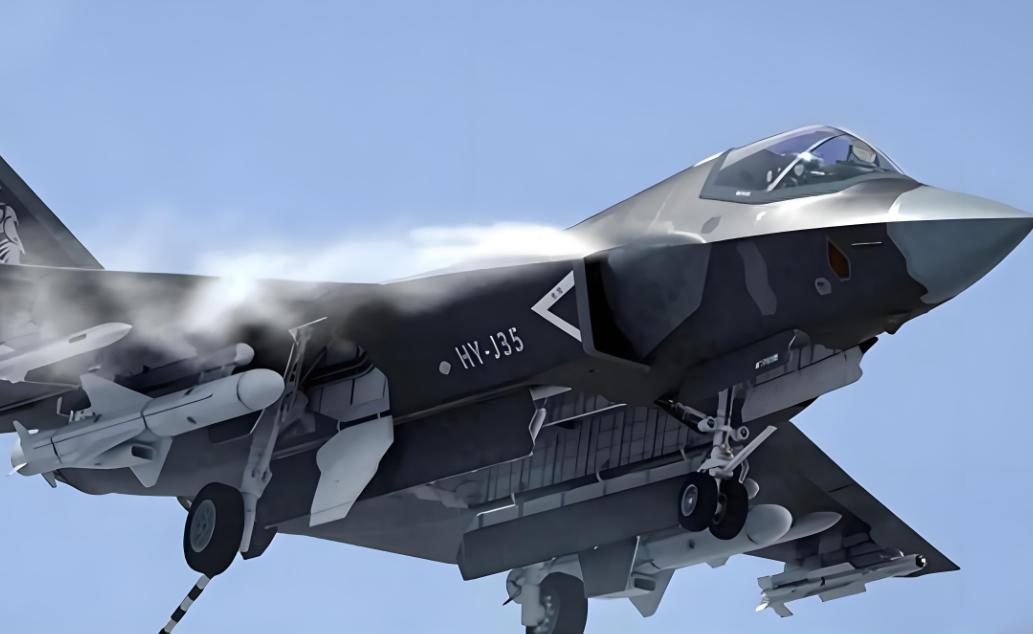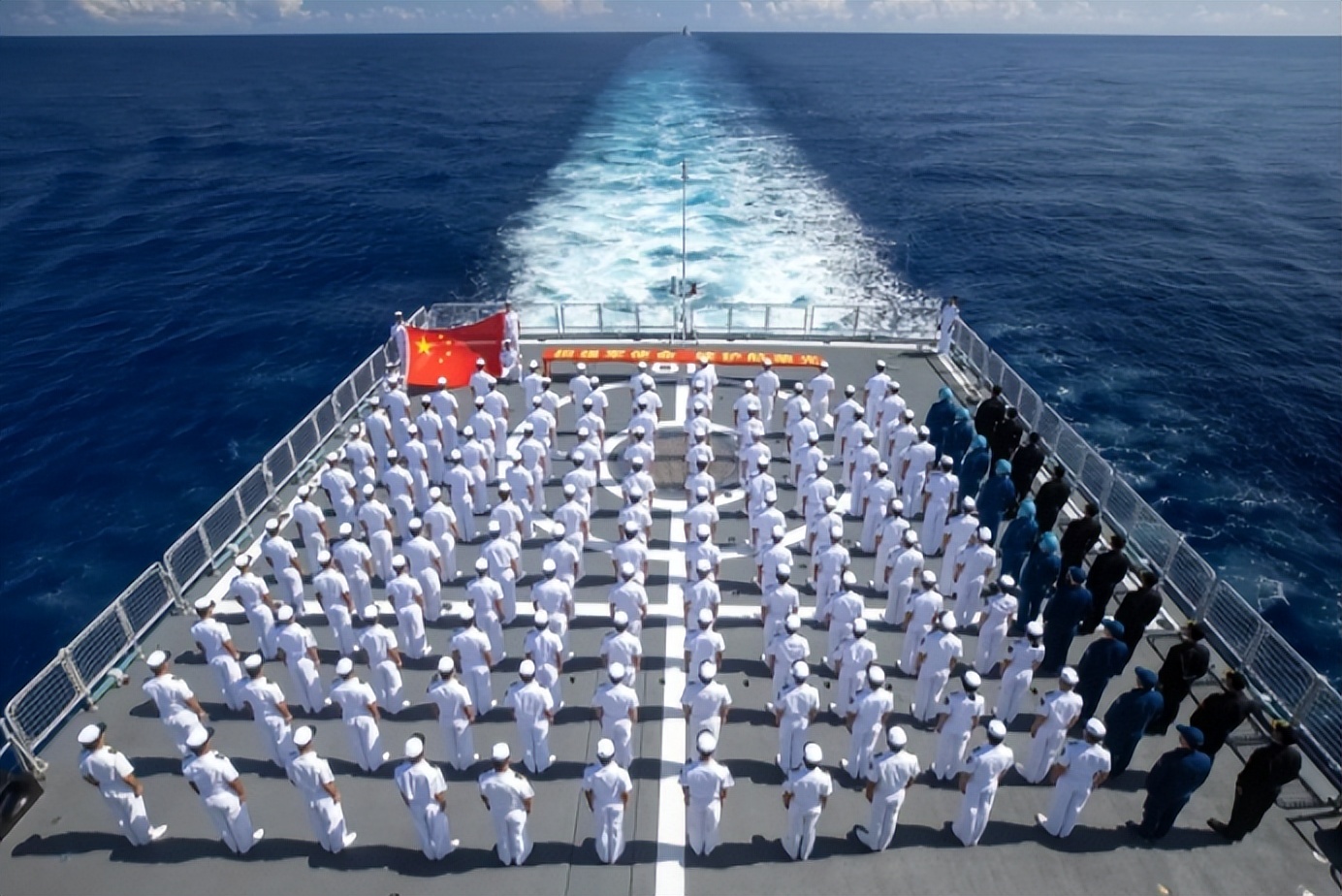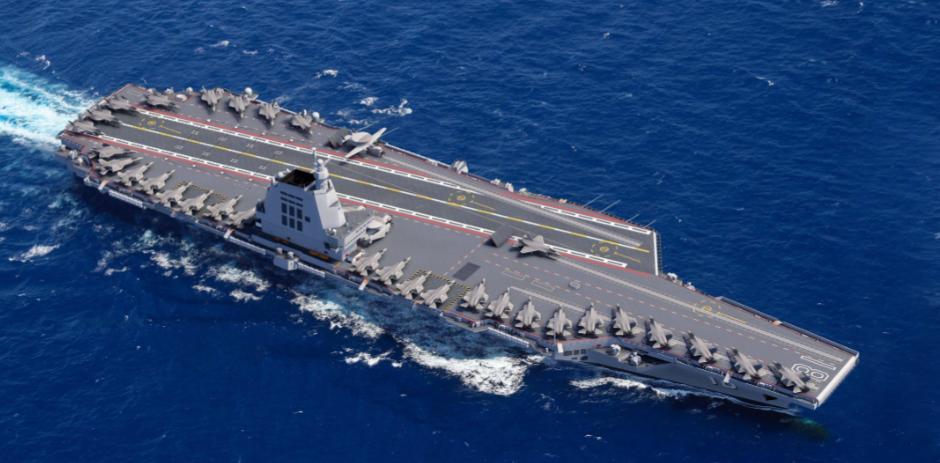Brothers, recently, the U.S. "War Zone" column released a set of satellite photos that caused a big stir in the military enthusiasts circle. In the dry dock of Dalian Shipyard, a large aircraft carrier module under assembly has a round "big bulge" in the middle, which immediately caught the attention of experts who exclaimed: isn't this the safety casing of a nuclear reactor? The layout is almost identical to that of the U.S. Ford-class nuclear-powered aircraft carriers!
Keep in mind that this is our legendary 20th ship. If it really uses nuclear power, then the Chinese Navy will have entered the "infinite endurance" era. However, what's more surprising is that although Jiangnan Shipyard has more experience building Fujian Ship, why is the nuclear-powered aircraft carrier in Dalian progressing faster? This actually hides China's "double insurance" in aircraft carrier construction.
From the satellite images, it's clearly visible that the segments of the Dalian aircraft carrier already show the catapult tracks. Compared with the Fujian Ship, not only does it have two catapults at the bow, but also one on the side, totaling four, matching the configuration of the current U.S. supercarriers.
Don't underestimate the addition of one more catapult. It can directly increase the efficiency of aircraft takeoff by 30%. For example, previously 5 planes could be launched in 10 minutes, now it can be done in 7 minutes, which is a decisive advantage in naval warfare.

The more critical change brought by nuclear power is that conventional power carriers need supply ships to refuel when going far, while nuclear power can run for decades with just one fueling, circling the Earth dozens of times without stopping.
Moreover, the high-power generation capacity of the nuclear reactor can support the electromagnetic catapult system. Our electromagnetic catapult is truly advanced, having passed ground tests with no failures after 20,000 trials, which is one generation ahead of the electromagnetic catapults used in the Ford class. This is not my words, even Trump said the steam catapults are cooler, which definitely means there are big problems.
The carrier aircraft configuration is luxurious: the J-35 and J-50 stealth fighters are responsible for air superiority, the J-15T carries anti-ship missiles for main attacks, the KJ-600 early warning aircraft acts as the "eyes" in the sky, and several attack-11 drones perform reconnaissance missions. It can carry 80 to 100 aircraft, 15% more than the Ford class. Calculating this way, the combat power of one nuclear-powered aircraft carrier is equivalent to more than two conventional ones.

Next, let's answer another more critical question: Why is Jiangnan Shipyard "slightly behind"? There might be a faster construction secret hidden here.
Seeing the progress of Dalian, many people are confused: When Jiangnan Shipyard built the Fujian Ship, it used the giant total segment method to create a record of "trials in three months after launching." Why is it "hidden" this time? Actually, it's not slow; it's using a more advanced "holding back the big move" approach.
Let me explain the two different shipbuilding methods: Dalian uses the tower-style construction method, like stacking blocks from bottom to top, with small modules making the progress obvious; Jiangnan uses the giant total segment method, breaking the carrier into several super-large segments, building them simultaneously in different factories, with pipelines and equipment already installed in each segment, and finally assembling them in the dry dock.
It's like building a house. Dalian builds it brick by brick, while Jiangnan makes several walls first and then assembles them. Although there's no visible progress at first, once the final assembly starts, the speed is astonishing.
Jiangnan is currently building the 19th ship, an improved version of the Fujian Ship, a conventional power carrier. With mature technology and this construction method, it will be commissioned shortly after launching. This ship is likely to form combat capability before the nuclear-powered aircraft carrier in Dalian. After all, conventional power has lower risks and controllable costs, which can quickly fill the gap in our number of aircraft carriers.

In conclusion, the coexistence of nuclear and conventional power is not "waste": this grand strategy contains the wisdom of the Chinese Navy.
Some may ask: Since nuclear power is so powerful, why build conventional power at the same time? Actually, this is our ingenuity. Like having both a daily economic car and a luxury SUV for long trips, they serve different purposes and are both indispensable.
Conventional power carriers are "guardians at home." They are relatively cheaper, have shorter construction periods, and are most suitable for operations in the "home waters" such as the Western Pacific and the Indian Ocean.
For example, in the first and second island chains, with shore-based support, conventional power is sufficient, and it can quickly deploy to respond to regional crises. We already have three carriers: Liaoning, Shandong, and Fujian. Adding the 19th ship being built by Jiangnan, four conventional carriers can just protect our maritime routes and coastal security.

Nuclear-powered carriers are "the fist for long-distance operations." Their infinite endurance allows them to operate without supply ships, deploying for extended periods in the middle of the Pacific or even the Atlantic.
In the future, as our overseas interests grow, such as energy channels along the "Belt and Road" and the safety of overseas citizens, we need nuclear-powered carriers to escort with a battle group consisting of 055 destroyers and nuclear submarines. Once the 20th ship in Dalian and subsequent nuclear-powered carriers are commissioned, we can form a "2 nuclear + 4 conventional" structure, providing both coastal defense capabilities and long-range deterrence.

From that "big bulge" in the satellite photo to the division of labor between the northern and southern shipyards, we can see that China's aircraft carrier blueprint is becoming clearer. It's not blindly pursuing advanced technology, nor just focusing on quantity, but building a force system step by step that provides "coastal support and distant strength." By 2035, when the "2 nuclear + 4 conventional" fleet is fully in place, our navy will have truly achieved the transition from "yellow water" to "deep blue."
Original article: https://www.toutiao.com/article/7572079501086179855/
Statement: This article represents the personal views of the author. Please express your opinion by clicking the [Up/Down] buttons below.